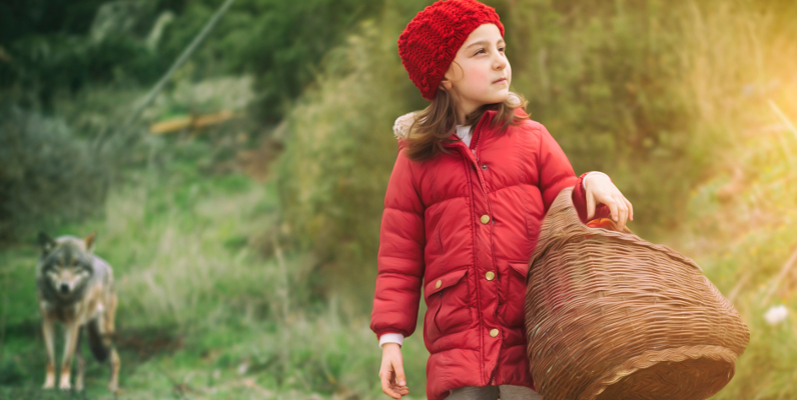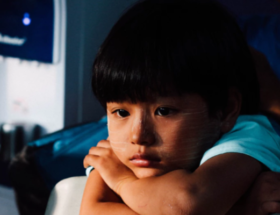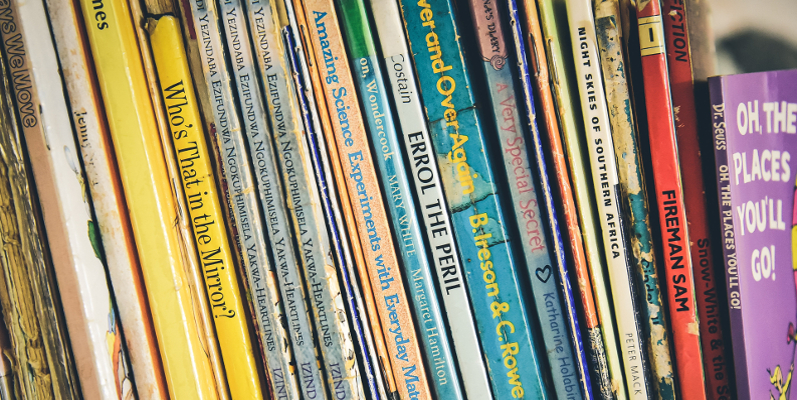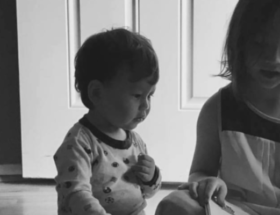I am so very pleased that Dani Burtsfield is the guest blogger today for That Thing You Do! Dani and I are tweeps. I met her when we both joined in the #G2Great Twitter chat each week. We’ve communicated often through social media and I was determined to get her to contribute here so teachers could hear about her work. You can follow Dani on Twitter @girlworld4 or contact her at burtsfieldd@sd5.k12.mt.us
As a literacy coach, one of the best parts of my job is the opportunity I have in entering any of the K-5 classrooms in my building to work and teach alongside dynamic, talented, and passionate educators. For the past several years our district has contracted with a top-notch literacy consultant who comes to our building periodically throughout the school year to share professional development in specific literacy practices that we can implement immediately in our classrooms. This fall I, along with a leadership team of classroom teachers attended training with her, and I followed up by going into several classrooms to help implement the new practices first-hand.
One of these new practices that our K-2 team focused on was story retell. This isn’t simply summarization, but instead a more in-depth practice of showing students the basic elements that every good story has, and with the use of a very basic graphic organizer, sketching these elements as an aide whereby students can effectively retell a story. How many times have we heard a student’s summary of a story only to hear one “and then… and then… and then…” after another? We want our students to understand story structure, author’s purpose, and further develop their comprehension skills. In order to do this we need to help walk them through a narrative story looking through a sharper, more focused lens.
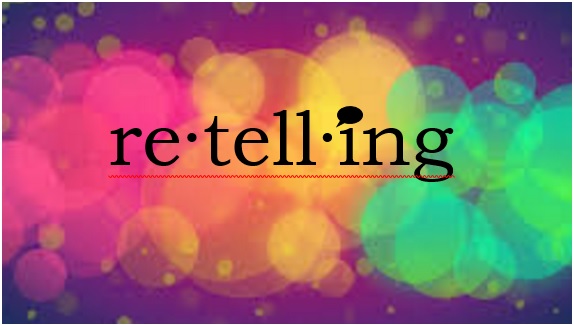
Many of us are familiar with the various story sequencing activities and structures that can be implemented with students. Within narrative texts, sequencing builds comprehension and helps students organize information and ideas efficiently, which are critical reading skills in and of themselves. What we have found through the practice of story retell is that it not only focuses on sequence, but also on various elements of the story, including the development of the story’s character, key events in the story, and ultimately the character’s response to these events.
What does this look like in a classroom? Well, it begins with a quality read aloud. I cannot overemphasize the importance of this nor can I put it better than my friends Jan Burkins & Kim Yaris do in their book Who’s Doing The Work? when they say, “…there is no excuse for wasting a minute of instructional time with books that are marginally appealing, have no substantial ideas, or present uninspired illustrations.” Struggling to find one? Ask your librarian, your colleagues, or search the internet. One great source I recently discovered is from Dylan Teut. Here on his blog, you will find countless picture book recommendations shared on numerous posts.
Preview the read aloud on your own first. You want to have a clear picture of the various story retell elements you will be sharing with your students, although covertly on the first read. I love how Lester Laminack encourages us not to overdo thinking aloud for our students during the first read; “The first read is a gift” he so eloquently reminds us.
The work of story retell really begins on the next day (or later in the day) when you reread the book together. Here is where you begin to share with students each of the elements every good story has.
A Character: Every good story has a main character, and this character has very clear characteristics that make him/her special and unique. He is the
hero who the reader can root for. Moreover, the character often has a goal that will be played out in the story.
Emotional response: The character will respond to the conflict with various thoughts and feelings (we call this the “heart response”).
Events that follow character’s response: Depending on the complexity and length of the story as a whole, this can generally be anywhere from 1 to 4
middle events in the story that occur after the character experiences the conflict. These events are what keep the story moving along and will often
include descriptions, dialogue, actions with other characters, as well as more thoughts and feelings that eventually lead to a resolution of the story.
Resolution of the conflict: This is where the crisis is followed by the climatic ending that resolves our character’s conflict; the “until finally” moment in the story.
Lesson learned or take away: This generally ties back to the main idea, and can ultimately be the character’s new reality. Overall, this is the theme of
the story and answers the question, What did the author want the reader to learn?
Here is a sample story retell map drawn from the story The Bear and the Piano by David Litchfield. Each of the six story elements from above are illustrated in the six boxes. Note that the fourth box is subdivided into four separate elements. There is no set formula or expectation that every story will have four of these; the complexity of the story’s plot will determine this. I model for students that these boxes are often connected to one another with “because of that…” and “therefore…” This eliminates the never-ending “and then… and then…” that teachers often see too much of in our students’ narratives.
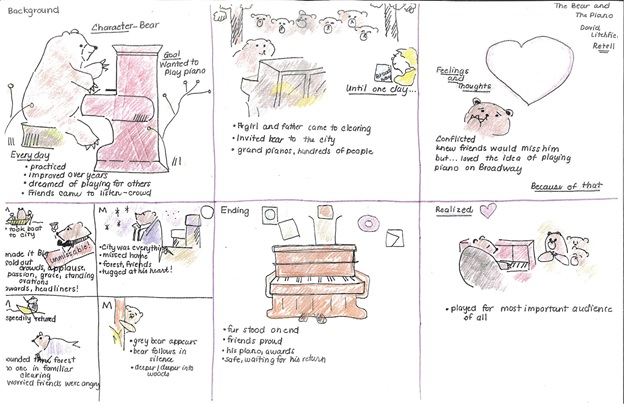
For our K-1 students, this entire practice can be daunting to start with. I recently took The Bear and the Piano into a first grade classroom, but instead of attempting to teach the full story retell lesson, I focused only on the first three elements of the story. I read the story aloud the first day, then on the second day I reread only far enough into the story to where the character experienced the initial conflict and responded with thoughts and feelings. Through a combination of think aloud, turn and talk, and shared whole group discussion, we walked through story elements 1, 2, and 3. Finally, students practiced retelling the story across their fingers with a partner. On the third day we did a brief retell across fingers, and then I gave each student a 6” x 17” piece of paper divided into three sections, and together we sketched our story retell map. Here are a few snapshots of their work:
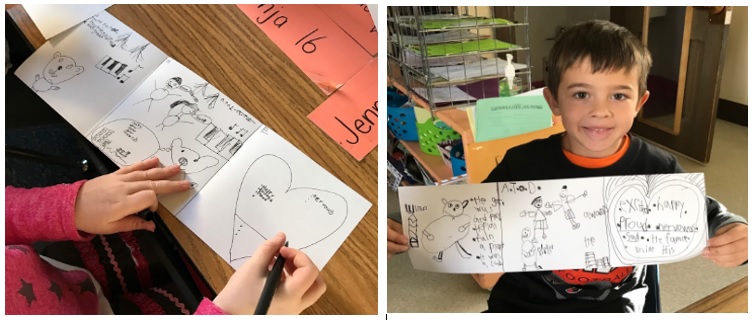
In several classrooms what we found especially valuable from this practice was its amazing ability to transfer to students’ writing. Once students have a solid understanding of story retell, they begin to see that any good story contains the same basic elements that they as writers can bring into their own stories. During our personal narrative unit of study, we have found that students who have practiced story retell with read-alouds have a much easier time developing and drafting their own personal narratives than those who have not. Connecting and creating an understanding between reading and writing has never been so evident to me as a teacher as when I saw how this unfolded with students. It further confirmed to me what a colleague and friend of mine shared with me in my first year as a teacher: “Depending on the student, reading can be the backdoor to writing, and writing can be the backdoor to reading.” Isn’t it amazing how these two practices are so intertwined?
The reading and writing process in any classroom is challenging, complex at times, and at best, unpredictable. Every year is a unique journey with a one-of-a-kind cast of characters within the four walls of our classroom. Teachers are gifted with the responsibility of charting a course of action whereby we can facilitate learning opportunities rich with a variety of tools, strategies, and experiences that will ignite and sustain a passion for learning in all of our students. With high quality literature and effective literacy practices like story retell, we can begin to unlock the process of storytelling to our students in not only an effective manner, but in such a way that all learners can access the process to become the readers and writers we want them to be.
–Dani Burtsfield

